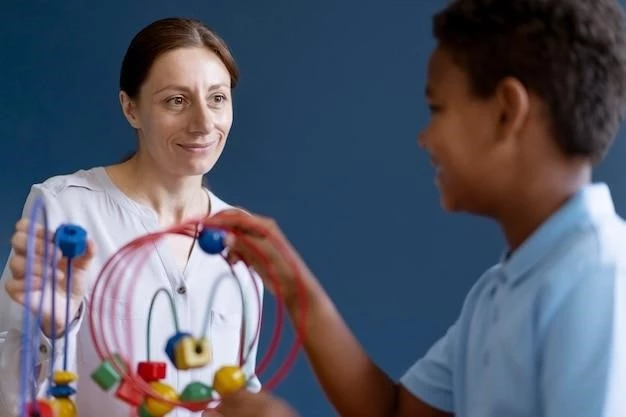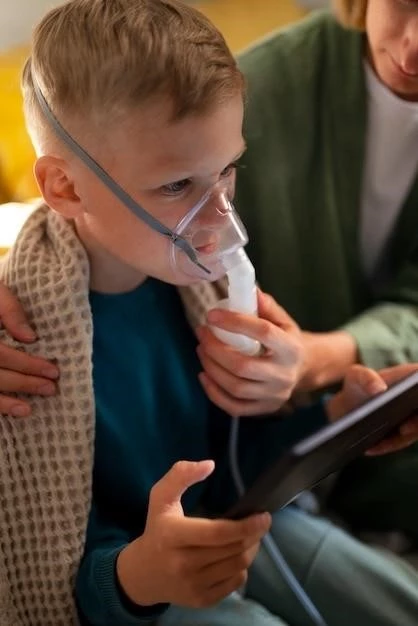Introduction to Micro Syndrome
Disease⁚ Micro syndrome is an autosomal recessive disorder characterized by severe intellectual disability, microcephaly, congenital cataract, microcornea, and other distinct features.
Disease⁚ Micro syndrome is a rare autosomal recessive disorder characterized by severe intellectual disability, microcephaly, congenital cataract, microcornea, and other distinct features. It is primarily caused by mutations in specific genes, leading to a range of ocular and neurodevelopmental defects. Genetic testing is essential for accurate diagnosis, especially when presenting with early symptoms such as congenital cataracts and developmental delays.
Definition and Background
Disease⁚ Micro syndrome is a rare autosomal recessive disorder characterized by severe intellectual disability, microcephaly, congenital cataract, microcornea, and other distinct features. It primarily results from mutations in specific genes, leading to a range of ocular and neurodevelopmental defects. Genetic testing plays a crucial role in accurate diagnosis, particularly when early symptoms such as congenital cataracts and developmental delays manifest.
Mutations Associated with Micro Syndrome
In micro syndrome, specific mutations in genes such as RAB3GAP2 on chromosome 1q41 are responsible for the condition. These genetic alterations lead to the distinct ocular and neurodevelopmental features observed in individuals with micro syndrome.
Autosomal Recessive Inheritance Pattern
In the case of micro syndrome, an autosomal recessive inheritance pattern is observed, which means that both parents must carry a copy of the mutated gene for the condition to manifest in their offspring. This genetic phenomenon underlines the need for comprehensive genetic counseling to assess the risk of recurrence in future pregnancies and to provide informed family planning guidance.

Clinical Features of Micro Syndrome
MICRO syndrome is a rare autosomal recessive disorder characterized by severe intellectual disability, microcephaly, congenital cataract, microcornea, and other distinct features.
Ocular Manifestations
Ocular manifestations in individuals with micro syndrome include congenital cataracts, microcornea, and optic atrophy, contributing to the distinct clinical presentation of the disorder. These eye-related symptoms, along with other neurodevelopmental defects, are key features in diagnosing and managing micro syndrome.
Neurodevelopmental Defects
Individuals with micro syndrome may present with a spectrum of neurodevelopmental defects, including severe intellectual disability, developmental delays, and hypotonic diplegia. These neurological manifestations, along with ocular abnormalities, are key diagnostic features indicative of micro syndrome’s complex clinical presentation.
Other Common Symptoms
Micro syndrome is characterized by a range of common symptoms, including cortical dysplasia, severe mental retardation, hypotonic diplegia, and hypogenitalism, in addition to its ocular and neurodevelopmental manifestations. These distinct features contribute to the comprehensive clinical profile of micro syndrome.
Diagnosis of Micro Syndrome
The diagnosis of micro syndrome involves genetic testing and clinical assessment, particularly focusing on ocular and neurodevelopmental abnormalities. Early identification is crucial, especially when congenital cataracts and microcephaly are present.
Genetic Testing for Micro Syndrome
Diagnosis of micro syndrome involves genetic testing, with a focus on identifying mutations in specific genes such as RAB3GAP1٫ RAB3GAP2٫ and RAB18. These tests help confirm the genetic basis of the disorder٫ aiding in accurate diagnosis and appropriate management strategies.
Early Symptoms that Raise Suspicion
Early symptoms that raise suspicion of micro syndrome include congenital cataracts, microcephaly, cortical dysplasia, hypotonic diplegia, and hypogenitalism. Recognizing these signs promptly is crucial for initiating appropriate diagnostic evaluations and interventions.
Distinction Between Micro Syndrome and Other Disorders
When compared to other disorders, Micro syndrome presents with unique ocular and neurodevelopmental features, setting it apart from similar conditions such as Cerebro-Oculo-Facio-Skeletal Syndrome and Hereditary Spastic Paraplegia.
Comparison with Cerebro-Oculo-Facio-Skeletal Syndrome
When distinguishing Micro syndrome from Cerebro-Oculo-Facio-Skeletal Syndrome, the unique clinical features of each disorder, including ocular and neurodevelopmental manifestations, play a crucial role in accurate differentiation and diagnosis.
Distinguishing Micro Syndrome from Hereditary Spastic Paraplegia
When distinguishing Micro syndrome from Hereditary Spastic Paraplegia, the genetic etiology, clinical features, and associated symptoms play a critical role in accurately identifying each condition. Understanding these distinct characteristics is essential for precise diagnosis and appropriate management strategies.
Management and Treatment of Micro Syndrome
Management of Micro syndrome involves a multidisciplinary care approach to address ocular and neurodevelopmental abnormalities. Supportive therapies are crucial for individuals with Micro syndrome to enhance their quality of life.
Multidisciplinary Approach to Care
Patients with Micro syndrome benefit from a collaborative care model involving various specialists to address ocular and neurodevelopmental issues effectively. The multidisciplinary team approach ensures comprehensive evaluation and tailored interventions for optimal patient outcomes.
Supportive Therapies for Individuals with Micro Syndrome
Individuals with Micro syndrome may benefit from supportive therapies aimed at addressing their complex needs, enhancing their quality of life, and optimizing developmental outcomes. Various interventions may include occupational therapy, visual aids, speech therapy, and early intervention programs tailored to the specific challenges presented by each individual with Micro syndrome.
Prognosis and Life Expectancy
Information based on existing texts suggests that Warburg Micro Syndrome does not significantly affect life expectancy, although secondary complications may pose life-threatening risks. Respiratory infections can be a concern due to reduced mobility and aspiration.
Impact of Micro Syndrome on Life Expectancy
Existing literature suggests that Warburg Micro Syndrome does not significantly impact life expectancy. However, complications such as respiratory infections due to reduced mobility can pose risks, emphasizing the importance of appropriate care and monitoring.

Research and Awareness Initiatives
Current studies on Micro syndrome focus on genetic analysis and clinical management strategies. Global awareness campaigns aim to address misconceptions about the condition and support affected individuals.
Current Studies on Micro Syndrome
Current research on Micro syndrome focuses on genetic analysis to identify causative mutations, aiding in the clinical management and understanding of this rare autosomal recessive disorder. Studies also aim to improve diagnostic methods and therapeutic interventions for individuals affected by Micro syndrome.
Global Awareness Campaigns Addressing Micro Syndrome
Global awareness initiatives addressing Micro syndrome aim to enhance understanding of the condition, dispel misconceptions, and provide support for affected individuals and their families. These campaigns strive to promote inclusivity and empower individuals impacted by Micro syndrome.
Challenges in Managing Micro Syndrome
Challenges in managing Micro syndrome include obtaining the correct diagnosis and accessing specialized healthcare services. Psychological and emotional support for families also presents significant challenges.
Access to Healthcare and Specialist Services
Access to specialized healthcare services presents a challenge in managing Micro syndrome, requiring coordination among various specialists. Establishing timely access to appropriate healthcare resources is critical in addressing the complex needs of individuals with Micro syndrome.
Psychological and Emotional Impact on Families
The psychological and emotional impact on families dealing with Micro syndrome can be profound, leading to increased stress, anxiety, and uncertainty. Providing comprehensive support and counseling services is crucial in helping families cope with the challenges posed by the condition.
Future Directions in Micro Syndrome Research
Exploring emerging therapeutic approaches and collaborative efforts to understand the pathophysiology of Micro syndrome are key research focuses to advance diagnosis and management of this rare disorder.
Emerging Therapeutic Approaches
Emerging therapeutic approaches in Micro syndrome research focus on genetic analysis for targeted interventions, potentially paving the way for novel treatments addressing the ocular and neurodevelopmental aspects of the disorder.
Collaborative Efforts in Understanding the Pathophysiology
Collaborative efforts in understanding the pathophysiology of Micro syndrome involve multi-disciplinary research teams working to elucidate the underlying mechanisms of the disorder at a molecular level. By combining expertise in genetics, neurology, and ophthalmology, researchers aim to uncover new insights that can potentially lead to innovative therapeutic strategies for individuals affected by Micro syndrome.
Conclusion
In conclusion, the complexities of Micro syndrome, with its distinct ocular and neurodevelopmental features, highlight the importance of continued research, collaborative efforts, and global awareness campaigns to enhance understanding, diagnosis, and management of this rare genetic disorder. By focusing on emerging therapeutic approaches and comprehensive care models, we take significant strides towards improved outcomes for individuals affected by Micro syndrome.
